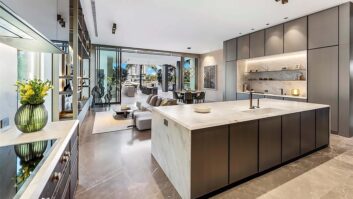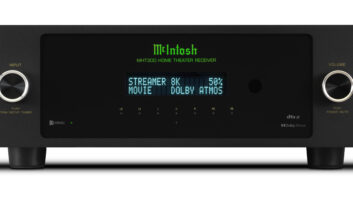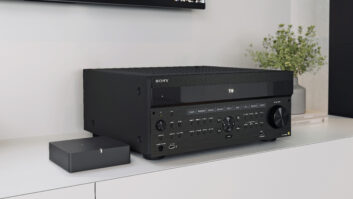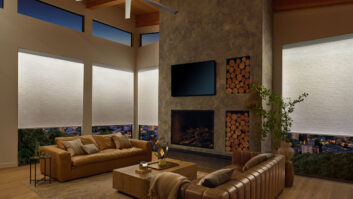by Morgan Strauss
A popular topic in online forums is the issue of programming audio distribution in larger installations, and how to best provide users with simple control over their systems. Traditionally, the approach taken in interface designs has been to have the user first select the room they want to control, and then the source they want to control in it, such as an iPod, media server, etc. In larger installations, however, this raises a problem. A zone can consist of a number of rooms. So the user has to select a room, select the source, and play it. Then select another room, select the source, and play it. And so on. If the zone consists of the entire first floor of a home, this can quickly become tedious. In addition, rooms don’t necessarily have sources in them. For example, if a user wants to play music on the patio, there isn’t an actual music server physically on the patio, so it’s counter-intuitive for them to select the room before the source.
A more efficient interface design switches the order around, having the user first select the source or activity and then the room. With this approach – which is the one Guifx takes – users can bring up the source and it will start playing automatically in the room they are currently in, and from there they can quickly add rooms or entire zones. Our interfaces feature a “distribute to rooms” button, which when pressed brings up the room grid, consisting of rows and columns, each representing a room or zone. A user could, for example, have a “party zone” consisting of all rooms and areas of the home where guests might be during a gathering. So say they want to play their iPod for a party. They simply select iPod, tap “distribute to rooms,” and select “party zone.” That’s all it takes. Controlling lighting and shading across the zone is also simple with our QuicKey navigation, allowing these non-AV functions to be controlled in a convenient pop-out modal window, which can simply be closed to return to the previous screen.

Morgan Strauss is the president of Guifx, an interface design studio specializing in touchscreen interfaces for home automation and embedded systems. He can be reached at [email protected].
Got a GUI story to tell?
Please drop me a line and share your experiences with GUI design, and let me know if you have any specific topics you’ll like to see covered in this space.







